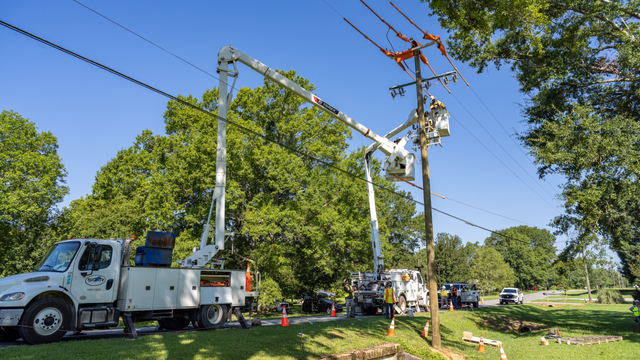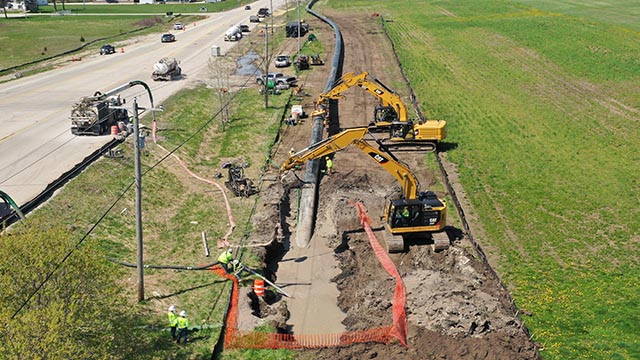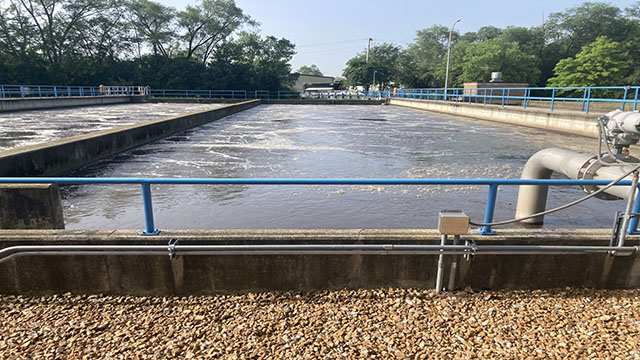IT’S NO SECRET – infrastructure in locations around the world isn’t getting any younger. Population growth and migration, urbanization and climate change put further strains on the assets required to deliver clean water, dispose of wastewater and provide needed electricity.
Aging infrastructure brings with it risk – in terms of potential failure and poor environmental compliance. The risk is a key concern for water and energy utilities around the world. U.S. infrastructure earned near failing grades in the 2009 Report Card for America’s Infrastructure from the American Society of Civil Engineers. Last year’s Strategic Directions in the Electric Utility Industry survey from Black & Veatch showed aging infrastructure as the top concern among electric utility providers.
While utilities realize the risks of aging infrastructure, the core question is in the evaluation. How are utilities to evaluate the risks and prioritize strategies for rehabilitation, repair or replacement?
One crucial tool for identifying, evaluating and prioritizing is a formal asset management program. While many utilities employ pieces of the complete package, less have a formal asset management program in place, according to Will Williams, Asset Management Director for Black & Veatch’s management consulting division.
“Plenty of utilities are performing key activities that are part of such a program,” Williams said. “A lot of them are doing things like condition assessment, understanding how their risk changes as the infrastructure ages, and collecting data and storing it in the right way.”
But Williams notes there is a wide range of views on exactly what is asset management. Assets aren’t just money in the bank, but rather are physical facilities that provide the level of service customers expect. Many utilities are just now beginning to manage these facilities as an asset that is connected to the funding required to replace the system.
“Asset management is more than a computerized maintenance management system or software,” Williams said. “It’s an overall approach – a management approach to running your business. It’s a framework or a way to organize your business to deliver levels of service at the least whole-life cost.”
With optimization of the management of assets a focus of the future, Black & Veatch was among the first companies to be selected as an Institute of Asset Management-endorsed assessor for PAS55. PAS55 is a recognized benchmark in the UK and a globally expanding application for best practice in physical asset and infrastructure management.
The Core Areas of Asset Management
According to the U.S. Environmental Protection Agency’s Asset Management: A Best Practices Guide, asset management examines five core areas as a starting point:
- What is the current state of the assets?
- What is my required “sustainable” level of service?
- Which assets are critical to sustained performance?
- What are my minimum life-cycle costs?
- What is my best long-term funding strategy?
The first three questions are aimed at having a clear picture of the utility’s infrastructure makeup. What’s located where and how critical is it in delivering required levels of service? In addition to asset inventories, maps, values and replacement costs, a condition assessment can help in determining the remaining useful life of infrastructure – particularly buried infrastructure that’s often out of sight and out of mind.
Condition assessments use various technologies and methods to gather information for analysis about the system or pipeline. Most utilities don’t use condition assessment routinely and have little data in the system, said Bryon Livingston, a Senior Project Engineer in the Buried Infrastructure practice of Black & Veatch’s global water business.
“Utilities that have implemented a proactive condition assessment program have reported that such programs cost-effectively reduce the risk of failure and provide value for both the utility and the community,” said Livingston. He is an author of “The Condition of Condition Assessment in the Water Industry,” which appeared in Journal AWWA in January 2012.
A number of factors also go into the level of service determination. This explores the required level of service that stakeholders and customers demand, balanced with regulatory requirements, the capabilities of the infrastructure and the actual performance. Levels of service are used as a driver for planning rehabilitation and replacement of aging assets.
Assessing the risk involves the two components of risk – the likelihood and the consequence of failure. Assessment of consequence involves looking at the effects – social, economic, health and safety, and environmental – of a breakdown, and is associated with asset criticality. The likelihood of failure is linked to asset condition.
“Likelihood multiplied by consequence equals risk,” Williams said. “Knowing that is a fundamental pillar of good asset management. It ranges from understanding the condition all the way through knowing how those assets are considered in the overall investment program.”
Strategic Planning
The final two questions from the EPA’s guide dig into strategic planning – identifying feasible strategies for managing operations and maintenance, staff and the capital budget, and understanding costs to keep critical assets functioning at the level of service.
It’s the long-term funding topic for infrastructure upgrades that has been a roadblock. The conversation features federal investment and boosted public-private collaboration. Longer term, it becomes a discussion of paying the true costs of producing and delivering water and power.
“Utilities are struggling with prioritization and a limited amount of money available for them to find and fix the right buried assets,” said David Egger, Senior Vice President and Director of Heavy Civil in Black & Veatch’s global water business. “The customer base is increasingly educated about the quality of service they should receive, and utilities realize they have vulnerabilities in their systems or are losing precious water to leakage. One day without water will turn many people into activists.”
UK Blazing a Trail
While other parts of the world face similar challenges in aging infrastructure, the UK has had a head start in the water and wastewater sector when compared to countries like the U.S. That’s due to the privatization of the water industry in England and Wales in 1989.
“The water industry in England and Wales has had 20 years of being operated as a business rather than as a municipal utility,” Williams said. “That’s caused the industry to get smarter about the way it prioritizes investment and the ways it achieves operational efficiencies to make sure the maintenance is optimized. The water industry has operated within a tight regulatory framework that has pushed it toward good practice asset management.”
During the past 10 years, U.S. utilities have expanded their focus on condition assessment and asset management, Egger said. For example, Black & Veatch has helped many utilities across the U.S. – including work in Dallas, Miami, Orange County, Calif., Johnson County, Kan., and Lawrence, Kan. – to prioritize their rehabilitation or replacement strategies for aging infrastructure.
“At Black & Veatch, we’ve seen the need and are leading this into the water sector,” Egger said. “Our experience in the UK and our industry leadership in the energy sector – particularly in the oil and gas and nuclear arenas, where regulatory frameworks are emerging and setting the tone – are helping us to better inform and assist water clients as they deal with a crush of aging infrastructure assets.”
Subject Matter Experts
William Williams: WilliamsWD@bv.com
Bryon Livingston: LivingstonB@bv.com
David Egger: EggerDF@bv.com
Webinar
Webinar: Challenges and Opportunities to Implementing a Successful Program
This webinar discusses how to Capture Opportunities by prioritizing infrastrucgture replacement, developing effective Capital Improvement Programs (CIPs), aligning existing programs and initiatives with Asset Management principles understanding strengths and weaknesses in overall service delivery, and tracking improvements according to plan, instead of building on uncoordinated efforts. It also covers how to overcome challenges like insufficient data, inadequate resources, resistance to change, and operational silos.






